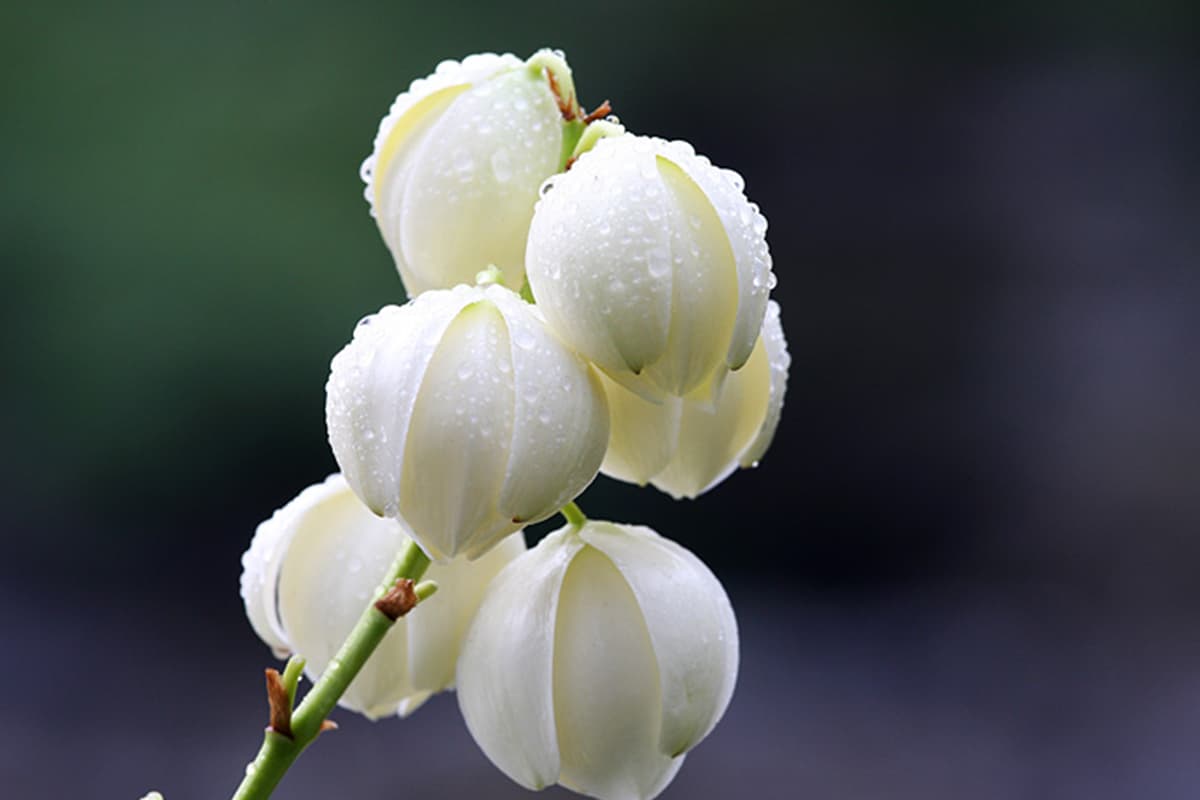
Yucca gloriosa, commonly known as Spanish dagger or mound-lily yucca, is a striking evergreen shrub belonging to the Asparagaceae family and Yucca genus. This architecturally impressive plant features a robust stem crowned with a dense rosette of sword-shaped, rigid leaves that can reach up to 2 feet (60 cm) in length.
During late summer to early fall, typically September and October, Yucca gloriosa produces spectacular panicles of flowers. These conical clusters, often reaching 3-6 feet (1-2 m) in height, are adorned with numerous creamy white to pale pink, bell-shaped flowers that gracefully droop from the inflorescence. Following pollination, the plant develops ovate, fleshy fruits that remain pendulous and do not split open at maturity.
Native to the coastal regions of the southeastern United States, from North Carolina to Florida and west to Louisiana, Yucca gloriosa has been widely cultivated globally for its ornamental value. It has become particularly popular in the Yangtze River region of China, where it has adapted well to local conditions.
This versatile plant demonstrates remarkable adaptability to various environmental conditions. It thrives in warm, humid climates with abundant sunshine but also exhibits impressive resilience.
Yucca gloriosa is notably cold-hardy for a yucca species, capable of withstanding temperatures as low as -15°C (5°F). It also shows admirable tolerance to shade, drought, and excessive moisture. Moreover, it adapts to a wide range of soil types, from sandy to clay, as long as good drainage is provided.
The Yucca gloriosa’s striking form and low maintenance requirements make it an excellent choice for various landscape applications. Its bold, architectural silhouette serves as a focal point in garden designs, making it ideal for central placement in flower beds or as a standalone specimen on lawns. The plant’s drought tolerance and structural integrity also make it suitable for roadside plantings and xeriscaping projects.
When incorporating Yucca gloriosa into landscape designs, consider its mature size, which can reach up to 8 feet (2.4 m) in height and width. Its sharp leaf tips necessitate thoughtful placement away from high-traffic areas. For a softer aesthetic, it pairs well with ornamental grasses or flowering perennials that complement its structural form.
In addition to its ornamental value, Yucca gloriosa has historical significance in Native American cultures, where various parts of the plant were used for food, fiber, and medicinal purposes. This cultural heritage adds an interesting dimension to its use in contemporary gardens, especially in educational or themed landscape projects.
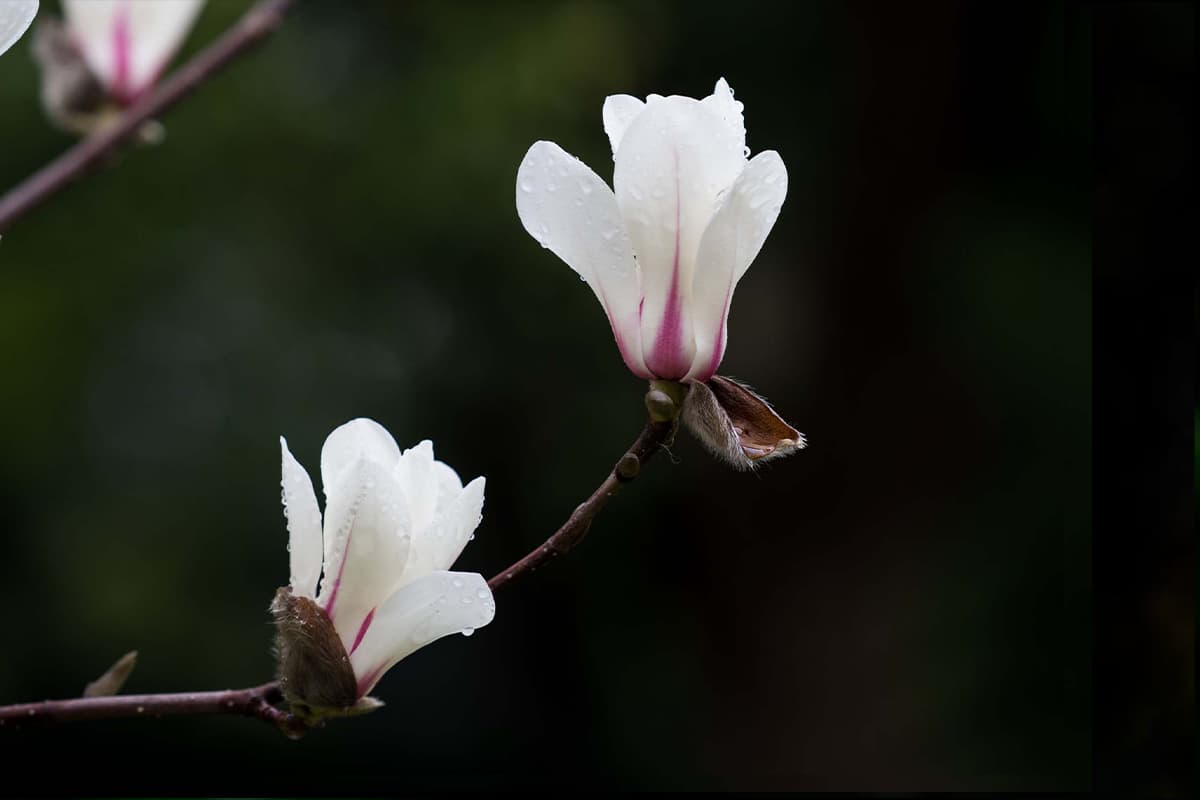
The Yulania denudata, commonly known as the Lily Tree or Yulan Magnolia, is a deciduous tree species belonging to the Magnoliaceae family. This elegant tree features a dark gray bark and slightly robust, grayish-brown twigs that contribute to its distinctive winter silhouette.
The leaves of Yulania denudata are obovate to broadly elliptic, measuring 10-15 cm long and 6-10 cm wide. They are papery in texture, with those at the base of the plant being more ovate in shape. The leaf stalks (petioles) are 1.5-2.5 cm long and covered in fine, soft pubescence. A characteristic narrow longitudinal groove runs along the upper surface of the petiole.
The flower buds are large, ovoid, and upright, covered in soft, pale brown hairs. As they develop, they emit a delightful, sweet fragrance that intensifies when the flowers open. The flower stalk (peduncle) noticeably swells as the bud matures and is densely covered in light yellow, silky trichomes.
The flowers of Yulania denudata are truly spectacular, measuring 10-15 cm in diameter when fully open. They consist of 9-12 tepals, which are pure white or occasionally tinged with pale pink at the base. The flowers have a delicate, slightly bluish-white hue and an orchid-like fragrance, which is the inspiration for the species’ common name in Chinese, “Yulan,” meaning “Jade Orchid.”
Blooming occurs in late winter to early spring, typically from February to March, before the leaves emerge. This precocious flowering habit creates a stunning display against the bare branches.
The fruit of Yulania denudata is an aggregate of follicles, forming a cone-like structure that is thick, woody, and brown when mature. It measures 10-15 cm long and 4-5 cm wide. The individual follicles split open along one side to reveal the seeds. Each seed is heart-shaped and flat, approximately 1 cm long, with a red outer seed coat (sarcotesta) and a black inner coat (sclerotesta). The fruit ripens and dehisces from August to September.
Native to central and eastern China, Yulania denudata has been cultivated for centuries in its homeland and is now widely grown in temperate regions of Europe and North America. It is highly valued in horticulture for its early, fragrant flowers and ornamental qualities.
In terms of cultivation, Yulania denudata is relatively hardy and can tolerate cold temperatures, surviving winter outdoors in USDA zones 6-9. It thrives in full sun to partial shade and prefers well-drained, fertile, slightly acidic to neutral soils. While the tree enjoys ample light, it benefits from protection from strong winds, which can damage its large flowers.
Although Yulania denudata prefers consistent moisture, it is important to note that it is averse to waterlogged conditions. The roots are susceptible to rot in poorly drained soils, so good drainage is essential. During dry periods, regular watering is beneficial, especially for young trees or those planted in full sun.
Pruning should be minimal and, if necessary, carried out immediately after flowering to avoid removing next year’s flower buds. With proper care, Yulania denudata can grow to a height of 9-12 meters (30-40 feet) and live for many decades, providing a spectacular early spring display in gardens and landscapes.
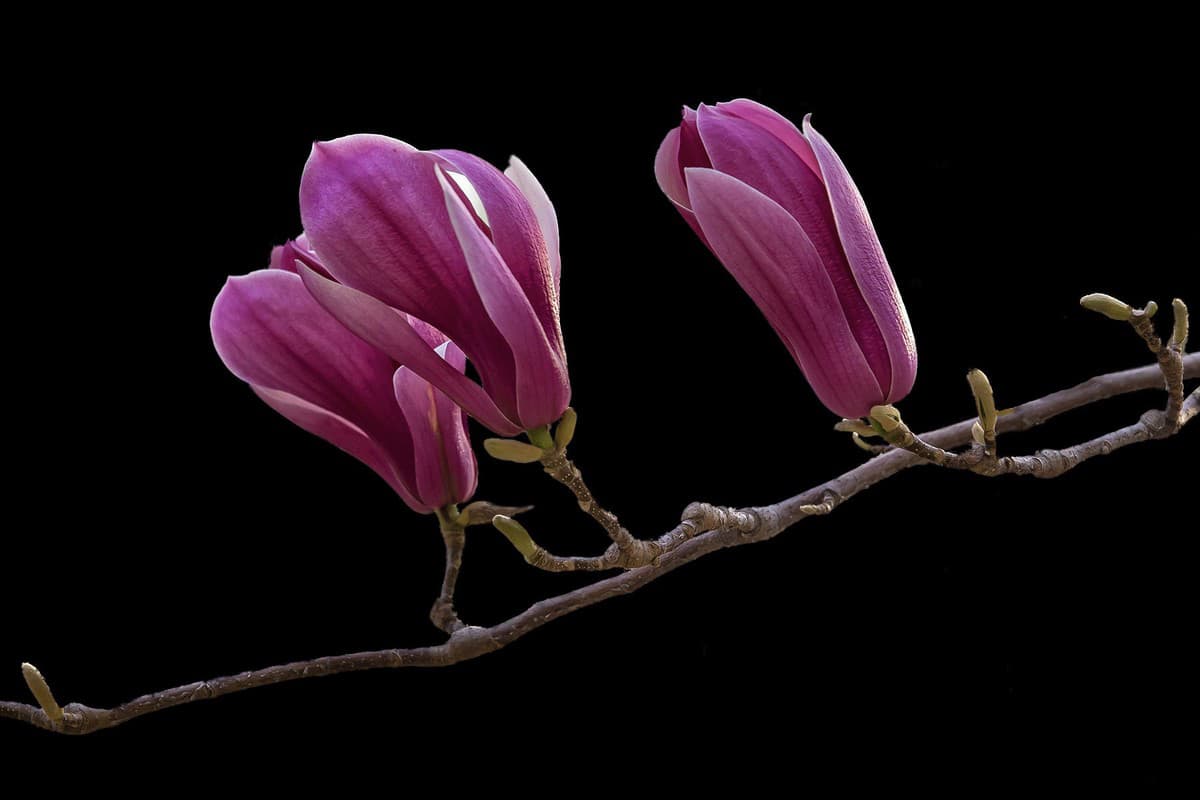
The Yulania liliiflora, commonly known as the Lily Magnolia or Mulan Magnolia, is a captivating deciduous shrub or small tree native to central and eastern China. It belongs to the Magnoliaceae family and was formerly classified under the genus Magnolia before being reclassified into the Yulania genus. This species is predominantly found in the provinces of Zhejiang, Anhui, Jiangxi, Hubei, Hunan, and Sichuan.
The Lily Magnolia thrives in regions with altitudes ranging from 300 to 1,600 meters, typically inhabiting forest edges, thickets, and stream banks in hilly areas. It prefers well-drained, slightly acidic soils and partial shade to full sun exposure.
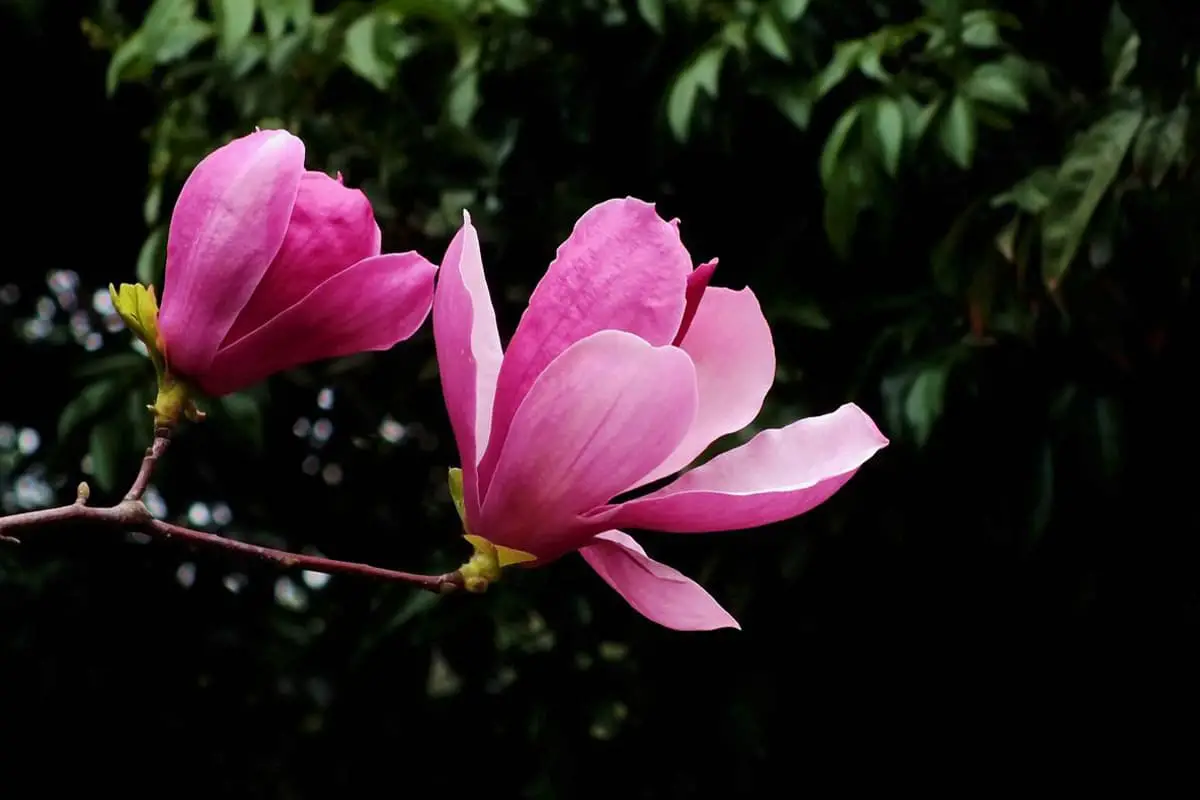
Bearing exquisite, fragrant blossoms, the Yulania liliiflora is a stunning ornamental plant whether cultivated as a specimen or in groupings. Its graceful, multi-stemmed structure and profusion of flowers make it an excellent choice for gardens, parks, and urban landscapes. The flowers, which appear before the leaves in early spring, are tulip-shaped and range in color from pure white to deep purple, with various shades of pink and lavender in between.
With a rich cultural history spanning over 2,000 years, the Lily Magnolia holds significance in traditional Chinese horticulture and herbal medicine. Its flower buds, known as “Xinyi” in Traditional Chinese Medicine, have been used to treat nasal congestion and headaches.
The Yulania liliiflora has been listed in the 2009 IUCN Red List of Threatened Species (version 3.2) as a plant of Least Concern. However, its wild populations face pressures from habitat loss and over-collection for ornamental and medicinal purposes. Cultivation can be challenging due to its specific soil and climate requirements, making successful transplantation and maintenance a task requiring horticultural expertise.
In garden settings, the Lily Magnolia benefits from protection against strong winds and late frosts, which can damage its early-blooming flowers. It pairs well with spring-flowering bulbs, woodland perennials, and other Asian garden plants. With proper care, including regular watering, mulching, and judicious pruning, this magnificent plant can provide years of breathtaking floral displays and year-round structural interest in the landscape.
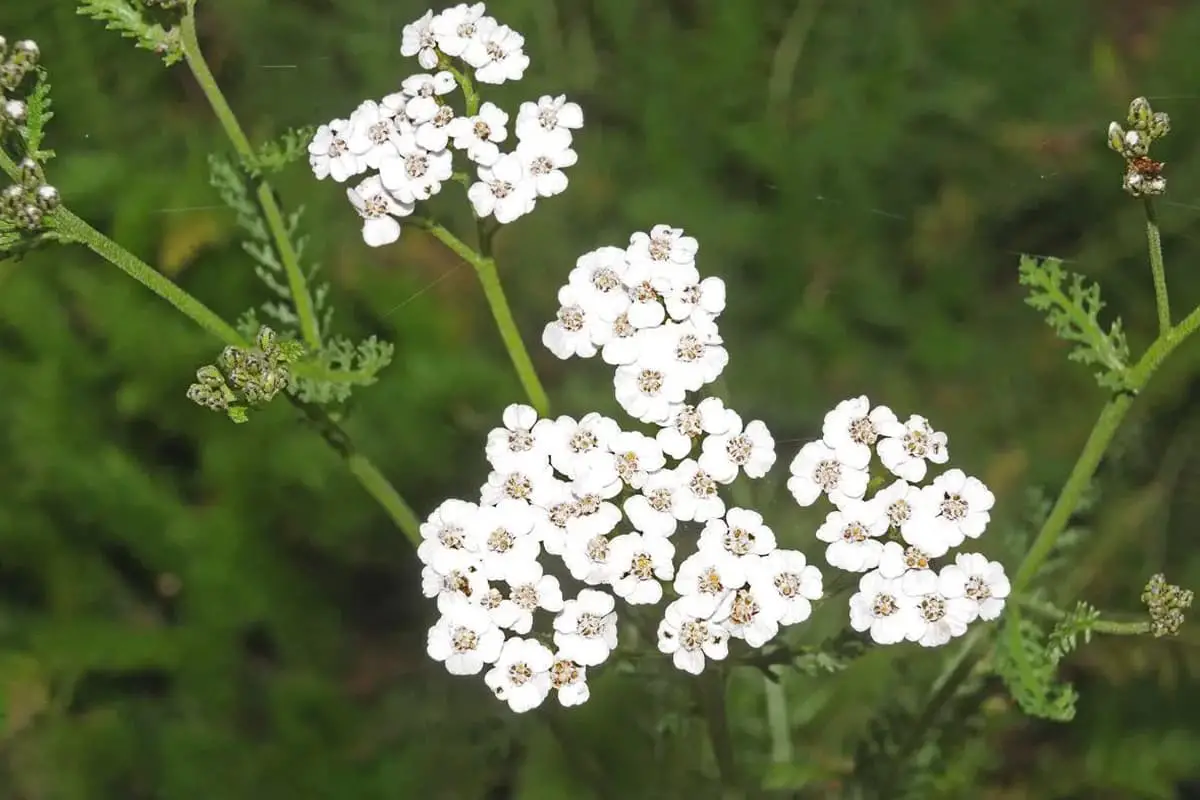
Yarrow, a resilient and versatile perennial, is renowned for its ease of cultivation and minimal maintenance requirements. This hardy plant, belonging to the Asteraceae family, is prized for its drought tolerance and its exceptional ability to attract a diverse array of pollinators, including butterflies, bees, and beneficial insects, as well as birds.
While Achillea millefolium naturally occurs in white, modern cultivars offer a spectrum of colors ranging from pale yellows to deep reds. The classic white variety remains the most popular, often favored for its timeless appeal and versatility in garden design.
Yarrow demonstrates remarkable adaptability, thriving in USDA hardiness zones 3 through 9. This wide range encompasses diverse climates, from the cold regions of northern states to the warmer southern areas. In optimal conditions, yarrow typically reaches a height of 24-36 inches (60-90 cm), forming dense, flat-topped flower clusters atop fern-like, aromatic foliage.
Beyond its ornamental value, yarrow has a rich history of medicinal use dating back thousands of years. Traditional herbalists have employed various parts of the plant for their astringent, anti-inflammatory, and wound-healing properties. The plant’s leaves and flowers contain volatile oils that contribute to its distinctive, pleasantly herbaceous scent, which not only adds sensory appeal to gardens but also acts as a natural insect repellent.
In the landscape, yarrow serves multiple functions. Its drought resistance makes it an excellent choice for xeriscaping and low-water gardens. The plant’s robust nature allows it to thrive in poor soils, making it ideal for stabilizing slopes or as a low-maintenance ground cover. For best performance, plant yarrow in full sun and well-drained soil, and divide clumps every 3-4 years to maintain vigor and prevent center die-out.
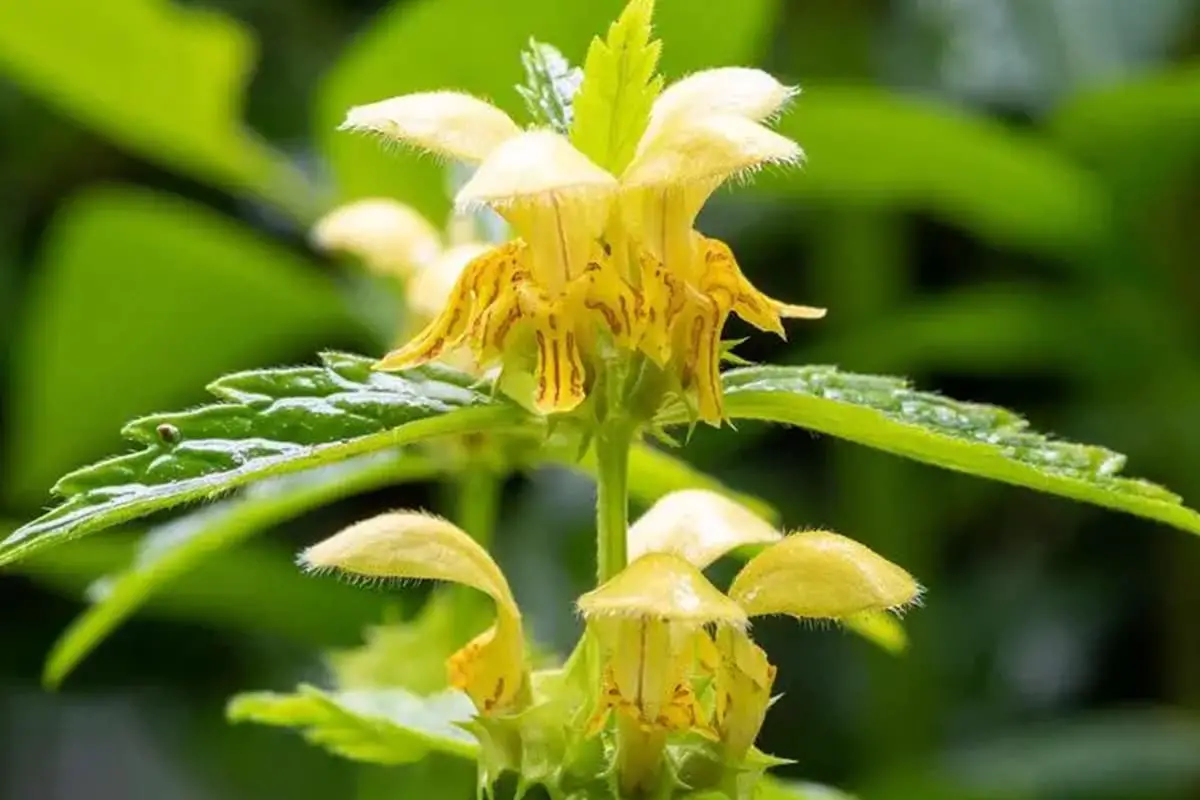
This resilient perennial, also known as yellow dead-nettle, is prized for its adaptability and ornamental value. Yellow archangel thrives in partial to full shade and demonstrates remarkable drought tolerance once established. It prefers slightly acidic to alkaline soil with a pH range of 6.0 to 8.0, making it suitable for various garden conditions.
The plant’s most striking feature is its vibrant yellow flowers, which typically bloom from late spring to early summer. These tubular blossoms are arranged in whorls along the stem and are often adorned with delicate brown speckles, adding depth to their visual appeal. The flowers are not only attractive to gardeners but also serve as a valuable nectar source for pollinators, particularly bees.
Yellow archangel typically reaches a mature height of 12 to 24 inches (30-60 cm), forming a dense, spreading groundcover. Its foliage is equally noteworthy, with variegated leaves that display silver markings on a green background, providing year-round interest even when not in bloom.
Hardy in USDA zones 4 to 9, this species can withstand a wide range of temperatures, from cold winters to warm summers. However, gardeners should be aware of its vigorous growth habit. In optimal conditions, yellow archangel can spread rapidly, making it an excellent choice for erosion control on slopes or as a ground cover in challenging shaded areas. Regular maintenance may be necessary to prevent it from becoming invasive in some regions.
When incorporating yellow archangel into your garden design, consider pairing it with other shade-loving perennials such as hostas, ferns, or astilbes for a diverse and textured woodland garden aesthetic.
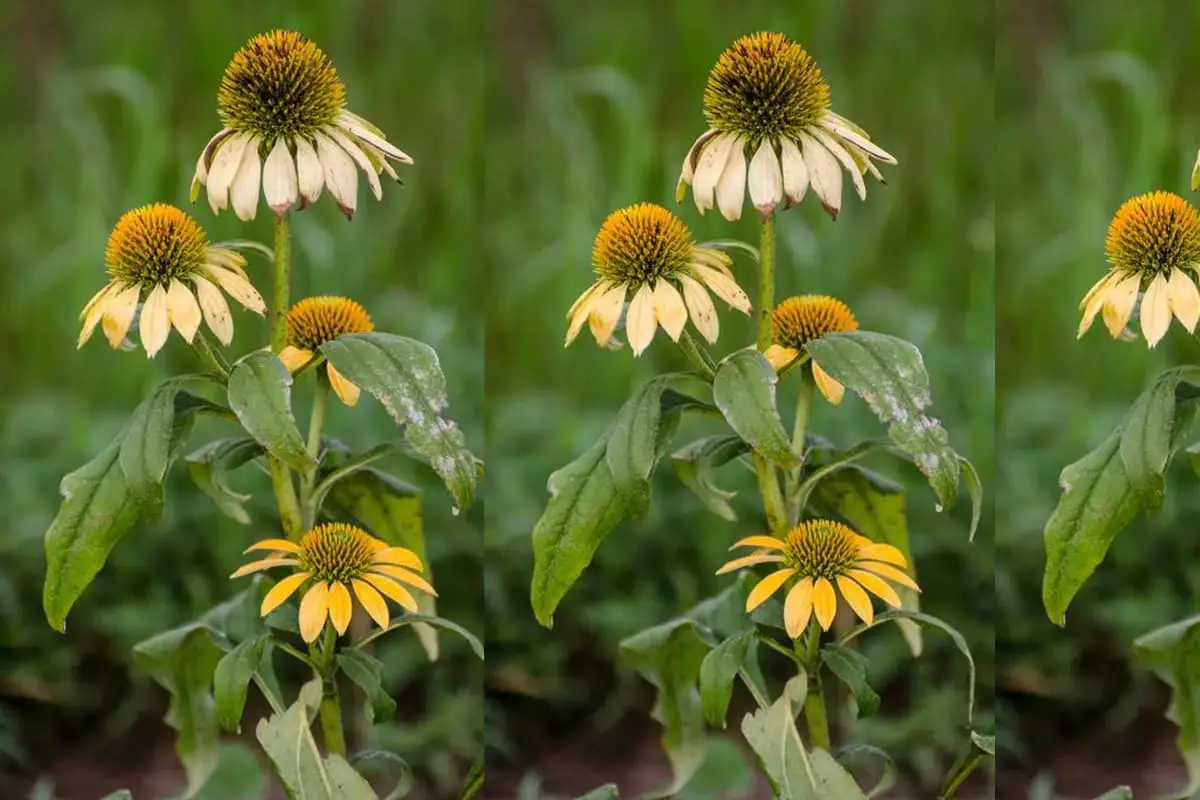
Native to the central United States, particularly the Ozark region, the Yellow Coneflower (Echinacea paradoxa) is a distinctive member of the Asteraceae family. It stands out as the only species within the Echinacea genus to produce vibrant yellow flowers, setting it apart from its purple-flowering relatives. This unique characteristic is reflected in its species name “paradoxa,” meaning paradoxical or unexpected.
The Yellow Coneflower typically grows 2-3 feet tall, featuring slender stems adorned with narrow, lance-shaped leaves. Its striking blooms, which appear from late spring through summer, consist of drooping yellow ray florets surrounding a prominent, cone-shaped center disk. This structure not only gives the flower its common name but also serves as an excellent landing platform for pollinators.
As a prairie plant, Echinacea paradoxa has evolved to thrive in challenging conditions. It demonstrates excellent drought tolerance once established, making it a valuable addition to water-wise gardens. Its deep taproot system allows it to access moisture and nutrients from far below the soil surface, contributing to its resilience.
The Yellow Coneflower’s ecological value is significant. It serves as an important nectar source for a variety of pollinators, including bees, butterflies, and moths. The seeds produced in the cone-like center are particularly attractive to birds, especially finches, providing a food source well into the fall and winter months.
In garden settings, Echinacea paradoxa offers multiple benefits. Its deer resistance makes it a practical choice for areas with high deer populations. The plant’s upright form and long-lasting blooms make it an excellent choice for perennial borders, prairie-style plantings, and naturalized areas. It also performs well in cut flower arrangements, adding a cheerful yellow hue and interesting texture.
Beyond its ornamental and ecological value, Yellow Coneflower, like other Echinacea species, has a history of medicinal use among Native American tribes. While most modern herbal preparations use the more common purple coneflower (Echinacea purpurea), ongoing research is exploring the potential medicinal properties of E. paradoxa.
For optimal growth, plant Yellow Coneflower in full sun to partial shade, in well-draining soil. While adaptable to various soil types, it prefers slightly acidic to neutral pH levels. Once established, this low-maintenance perennial requires minimal care, making it an excellent choice for both novice and experienced gardeners seeking to add a touch of golden beauty to their landscapes while supporting local ecosystems.
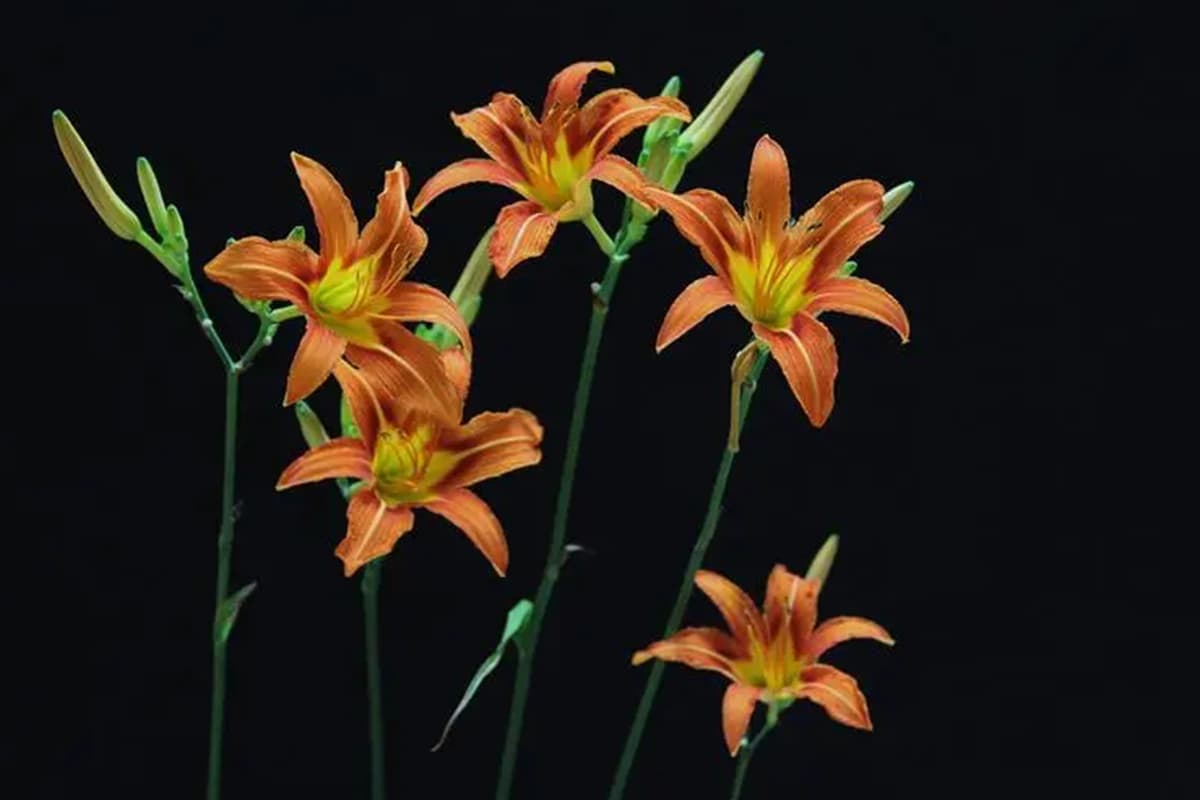
The Yellow Daylily, scientifically known as Hemerocallis lilioasphodelus, is a resilient and fast-spreading perennial that has earned its reputation as an excellent naturalizer in garden landscapes. This species thrives in full sun exposure and well-drained soils, making it adaptable to various garden settings.
One of the most appealing aspects of the Yellow Daylily is its ease of cultivation. It requires minimal maintenance once established, making it an ideal choice for both novice and experienced gardeners. The plant’s robust nature allows it to multiply quickly, forming dense clumps that can effectively cover large areas over time.
The vibrant yellow flowers of this daylily are not only visually striking but also serve an important ecological function. They are known to attract pollinators, particularly hummingbirds and butterflies, contributing to the biodiversity of your garden. This makes the Yellow Daylily an excellent choice for wildlife or pollinator gardens.
Despite its allure to beneficial wildlife, the Yellow Daylily possesses a natural defense against some garden pests. It is notably rabbit-resistant, which can be a significant advantage in areas where these animals are prevalent and pose a threat to garden plants.
When planning your garden, consider incorporating the Yellow Daylily in borders, mass plantings, or as part of a mixed perennial bed. Its ability to naturalize makes it particularly useful for hillside plantings or areas where low-maintenance ground cover is desired. With proper care, including occasional division to prevent overcrowding, the Yellow Daylily will provide years of golden blooms and garden interest.
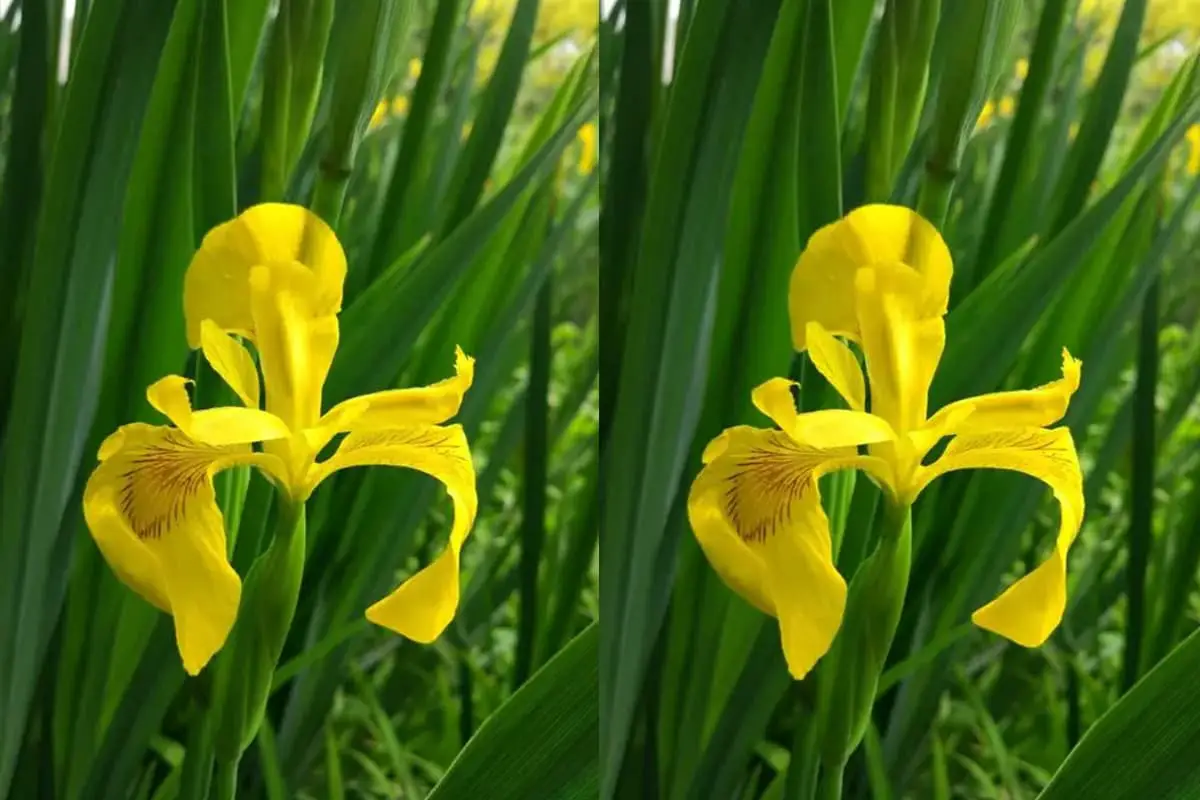
Native to Europe, northwest Africa, and western Asia, the Yellow Flag, scientifically known as Iris pseudacorus, is a striking aquatic and herbaceous perennial. This robust member of the Iris family showcases vibrant yellow flowers that bloom atop tall, sword-like foliage, creating a dramatic presence in wetland environments.
The Yellow Flag’s flowers are typically 7-10 cm (3-4 inches) in diameter, featuring three large, downward-arching sepals and three smaller, upright petals. These showy blooms appear from late spring to early summer, attracting various pollinators, including bees and butterflies. After flowering, the plant produces large seed capsules containing numerous pale brown, disk-shaped seeds that can float, aiding in water dispersal.
This iris thrives in consistently moist to wet soils and can be found growing along the margins of ponds, streams, and in marshes. It’s highly adaptable and can tolerate both standing water and brief periods of drought, making it a resilient species in fluctuating water conditions.
While valued for its ornamental qualities in water gardens and for its ability to stabilize shorelines, the Yellow Flag’s vigorous growth habit and prolific seed production have led to its classification as an invasive species in many regions outside its native range, particularly in North America. In these areas, it can outcompete native vegetation and alter ecosystem dynamics.
When cultivating Yellow Flag Iris in controlled settings, it’s essential to manage its spread and prevent escape into natural waterways. In its native habitats, however, this iris plays a vital role in supporting local biodiversity and contributing to the ecological balance of wetland ecosystems.
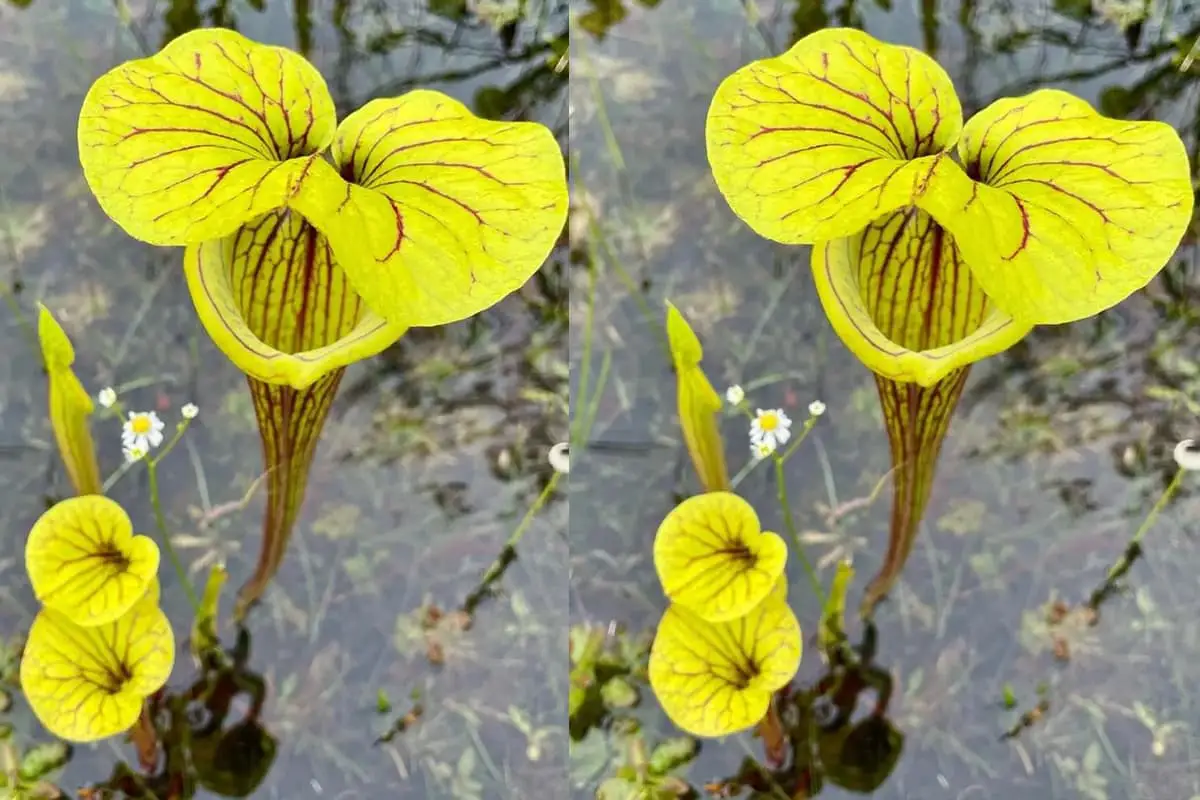
The Yellow Pitcher Plant (Sarracenia flava) is a fascinating carnivorous species native to the southeastern United States, particularly found in the coastal plains from Virginia to Florida and west to eastern Texas. This perennial herb is renowned for its distinctive trumpet-shaped leaves, which function as both foliage and highly specialized insect traps.
The plant’s modified leaves, known as pitchers, can grow up to 3 feet (91 cm) tall and are typically yellow-green in color, often featuring reddish veins and a reddish throat. These pitchers are topped with a hood-like structure called an operculum, which helps to prevent rainwater from diluting the digestive enzymes inside the trap.
Sarracenia flava attracts insects using a combination of visual lures, such as UV patterns visible to insects, and nectar secretions. Once prey enters the pitcher, downward-pointing hairs and a slippery surface make escape virtually impossible. The unfortunate insects eventually fall into a pool of liquid at the bottom of the pitcher, where they are slowly digested by enzymes secreted by the plant.
In its natural habitat, the Yellow Pitcher Plant thrives in nutrient-poor, acidic soils in bogs, seeps, and wet pine savannas. When cultivating this species, it’s crucial to mimic these conditions:
In ideal conditions, Yellow Pitcher Plants can indeed grow in dense colonies, creating a striking display in bog gardens or naturalized settings. However, it’s important to note that wild populations are under threat due to habitat loss and poaching. Therefore, it’s crucial to obtain plants only from reputable nurseries specializing in carnivorous plants.
With proper care, the Yellow Pitcher Plant not only serves as a unique and eye-catching addition to any garden but also offers a fascinating glimpse into the remarkable adaptations of carnivorous plants in nature.
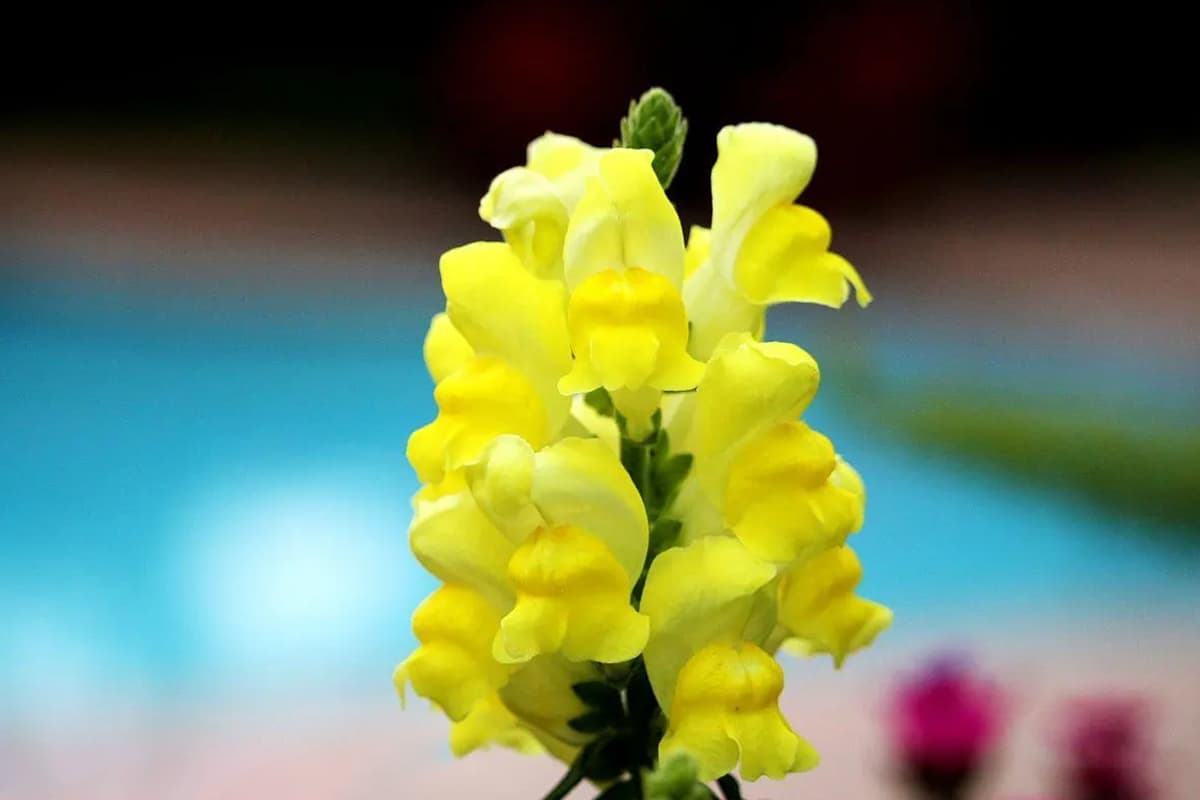
Yellow Wild Indigo, scientifically known as Baptisia sphaerocarpa, is a striking perennial native to the southern United States. This plant is renowned for its exuberant and beautiful bright yellow flowers that bloom in dense, upright racemes in late spring to early summer. The flowers are pea-like in structure, typical of plants in the legume family (Fabaceae).
The foliage of Yellow Wild Indigo is equally impressive, featuring bluish-green leaves that are palmately compound, dividing into three leaflets. This unique coloration provides an attractive contrast to the vibrant yellow blooms and adds year-round interest to the garden.
While visually appealing, it’s important to note that all parts of Baptisia sphaerocarpa are toxic if ingested. The plant contains alkaloids that can be harmful to herbivorous livestock, as well as humans and pets. This toxicity, however, makes the plant naturally resistant to deer and other grazing animals, adding to its value in wildlife-friendly gardens.
In its natural habitat, Yellow Wild Indigo thrives in well-drained soils and full sun to partial shade conditions. It is drought-tolerant once established, making it an excellent choice for xeriscaping and low-maintenance landscaping. The plant’s deep taproot contributes to its drought resistance but also means it’s best left undisturbed once planted.
Baptisia sphaerocarpa not only provides aesthetic value but also ecological benefits. It’s a host plant for several butterfly species, including the Wild Indigo Duskywing, and its nectar-rich flowers attract various pollinators. After flowering, the plant produces interesting spherical seed pods that turn black when mature, adding winter interest to the garden.
This hardy perennial requires minimal care, is resistant to most pests and diseases, and can live for decades in optimal conditions. Its architectural form and stunning blooms make it an excellent specimen plant or addition to native plant gardens, prairies, and naturalized areas.
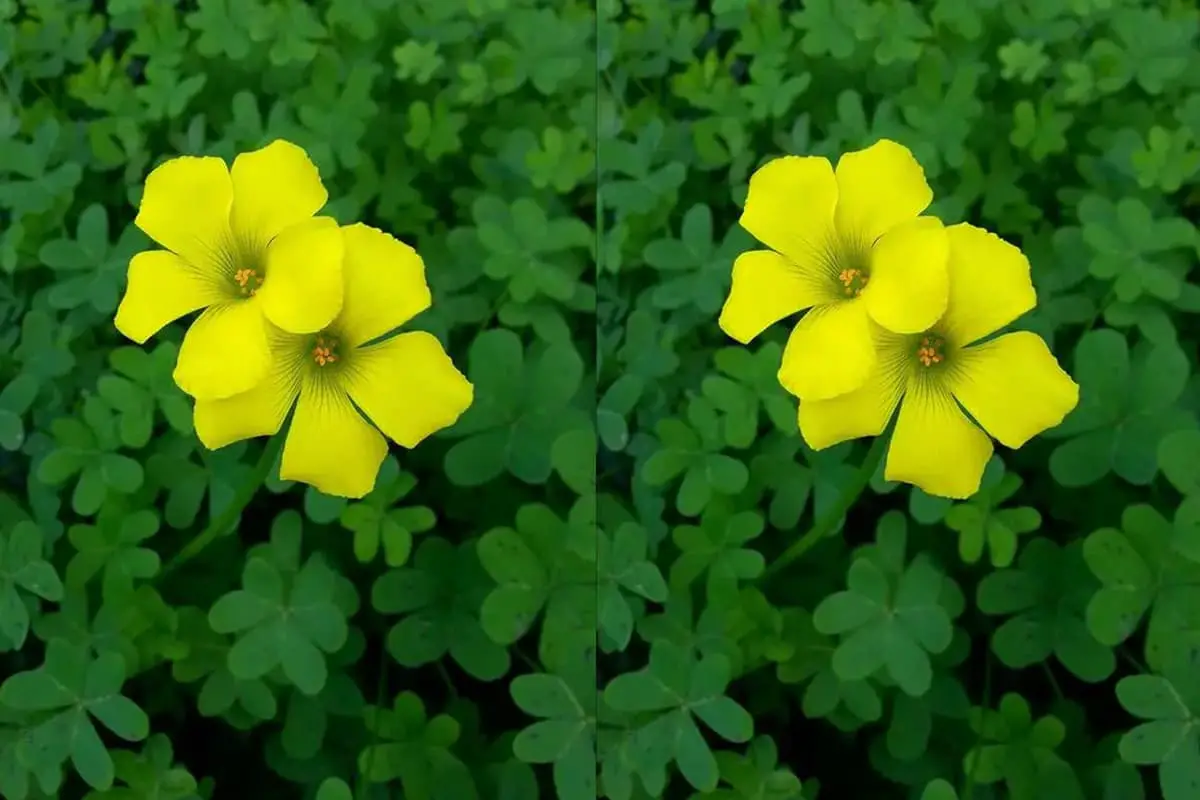
Yellow Wood Sorrel, scientifically known as Oxalis stricta, is a versatile and resilient annual that adds a delightful touch to gardens and landscapes. This plant, often mistaken for clover due to its trifoliate leaves, is notable for its deer-resistant properties and adaptability to various growing conditions.
Characterized by its bright yellow flowers, Yellow Wood Sorrel typically blooms from spring through fall, providing long-lasting color. While yellow is the most common flower color, some cultivars may produce white or pink blossoms. The flowers are small, typically measuring about 1/2 inch in diameter, and feature five petals arranged in a symmetrical pattern.
One of the most appealing aspects of Yellow Wood Sorrel is its adaptability. It thrives in partial shade, making it an excellent choice for areas that receive dappled sunlight or only a few hours of direct sun each day. This shade tolerance allows it to flourish in woodland gardens or under the canopy of larger plants.
Furthermore, Yellow Wood Sorrel demonstrates remarkable soil versatility. It can grow successfully in a wide range of soil types, from sandy to loamy and even clay soils, as long as they are well-draining. This adaptability makes it an excellent option for gardeners dealing with challenging soil conditions.
While primarily valued for its ornamental qualities, Yellow Wood Sorrel also has culinary and medicinal uses. Its leaves and flowers are edible, offering a tangy, lemony flavor that can be used in salads or as a garnish. However, it should be consumed in moderation due to its oxalic acid content.
Maintenance of Yellow Wood Sorrel is relatively simple. It requires moderate watering and can benefit from occasional fertilization, especially in poor soils. Its compact growth habit, typically reaching heights of 6-12 inches, makes it suitable for borders, rock gardens, or as a ground cover in partially shaded areas.
It’s worth noting that while Yellow Wood Sorrel is often considered a weed in some regions due to its prolific self-seeding, its attractive appearance and beneficial qualities make it a welcome addition to many gardens when properly managed.
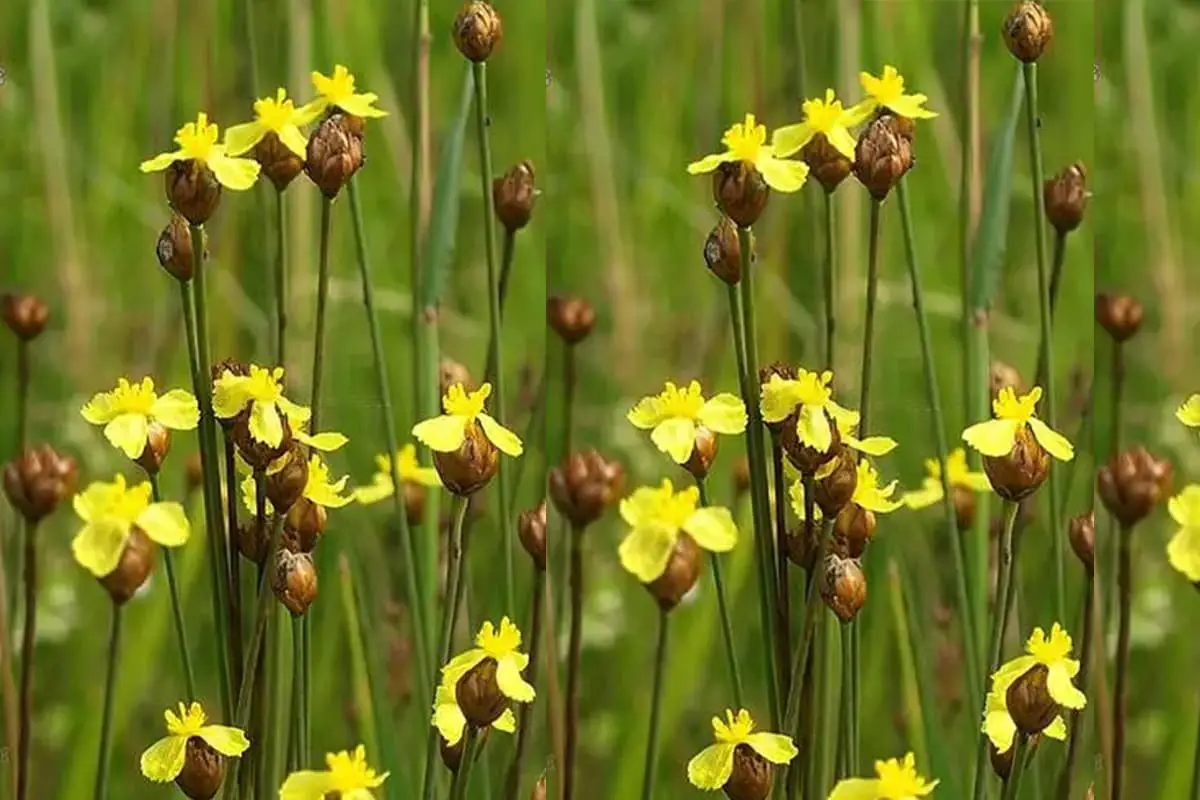
Yellow-Eyed Grass, scientifically known as Sisyrinchium californicum, is a charming native perennial typically found in moist habitats along the shores of lakes, ponds, and streams, as well as in and around bogs and fens. Despite its common name, it is not a true grass but belongs to the iris family (Iridaceae).
The plant features distinctive star-shaped flowers that bloom from late spring to early summer. Each flower consists of six bright yellow tepals (petals and sepals that are similar in appearance), which give the plant its common name. The flowers are approximately 1-2 cm in diameter and are borne on slender, branching stems that can reach heights of 10-40 cm (4-16 inches).
Yellow-Eyed Grass thrives in consistently moist to wet soils and requires regular watering to maintain optimal growth. It prefers full sun to partial shade conditions and can tolerate brief periods of standing water, making it an excellent choice for rain gardens or wetland restoration projects.
In its natural habitat, this species plays an important ecological role by providing food and shelter for various pollinators, including bees and butterflies. Its adaptability to wet conditions also makes it valuable for erosion control in riparian areas.
For gardeners interested in native plantings or creating wildlife-friendly landscapes, Yellow-Eyed Grass offers both aesthetic appeal and ecological benefits. Its compact size and bright yellow blooms make it an attractive addition to the edges of water features, bog gardens, or moist areas of wildflower meadows.
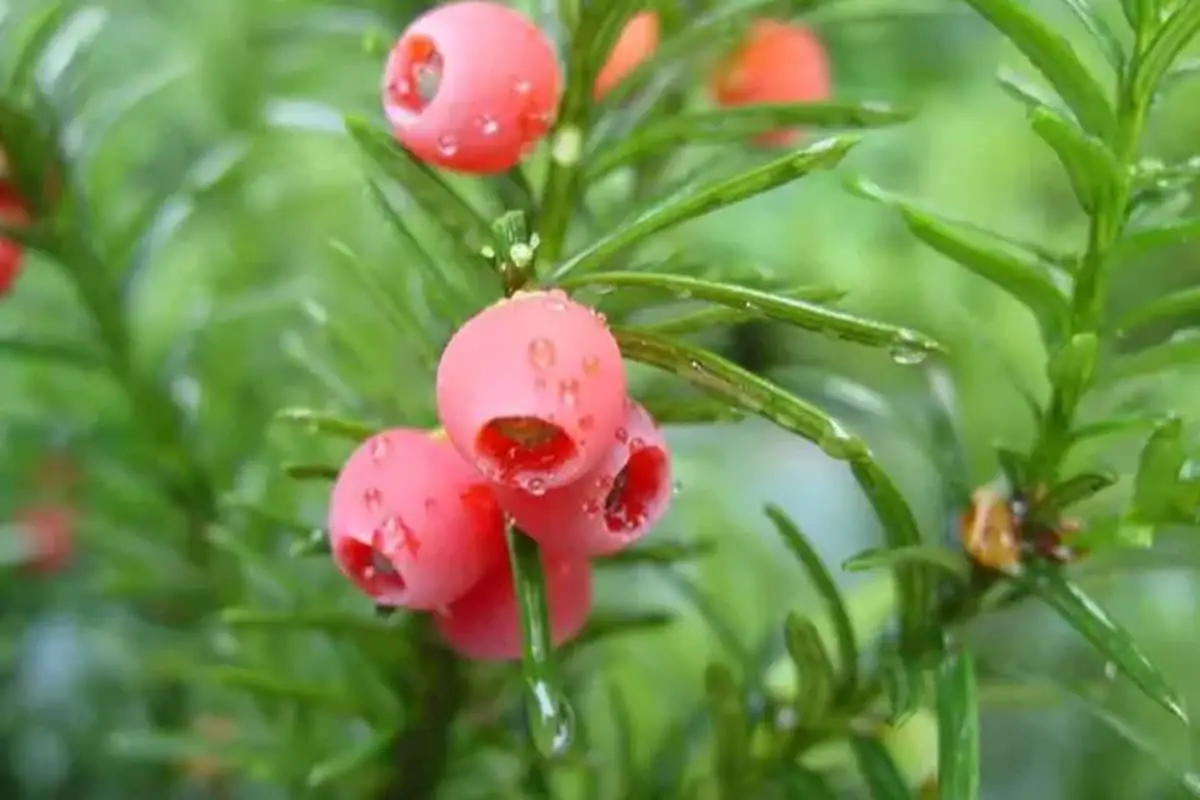
The Yew, scientifically known as Taxus baccata, is an ancient and remarkable evergreen conifer native to Europe, North Africa, and Southwest Asia. Though not a flowering plant, its distinctive characteristics and cultural significance make it a noteworthy species in the world of horticulture and landscaping.
Yew trees are renowned for their longevity, with some specimens estimated to be over 2,000 years old. Their dark green, needle-like leaves arranged in a spiral pattern on the branches create a dense, often sculpted appearance that has made them popular in formal gardens and topiary art for centuries.
In natural settings, Yew trees play a crucial ecological role. Their dense foliage provides excellent shelter and nesting sites for various woodland animals, including birds, small mammals, and insects. The trees also produce fleshy, bright red arils (often mistaken for berries) that are a valuable food source for birds, though it’s important to note that all other parts of the plant are highly toxic to humans and most animals.
Culturally, the Yew has a complex symbolism. While often associated with death and doom in European folklore – likely due to its presence in churchyards and its toxic properties – it also represents immortality and regeneration. This duality stems from the tree’s remarkable ability to regrow from old stumps and its extreme longevity.
In horticulture, Yew is prized for its versatility. It tolerates heavy pruning, making it ideal for hedges, screens, and elaborate garden designs. The species is also valued for its fine-grained, durable wood, historically used for longbows and high-quality furniture.
Despite its toxic nature, Yew has played a significant role in modern medicine. Compounds extracted from its bark and needles, particularly paclitaxel, have been developed into effective cancer treatments, showcasing how this ancient tree continues to impact human life in unexpected ways.